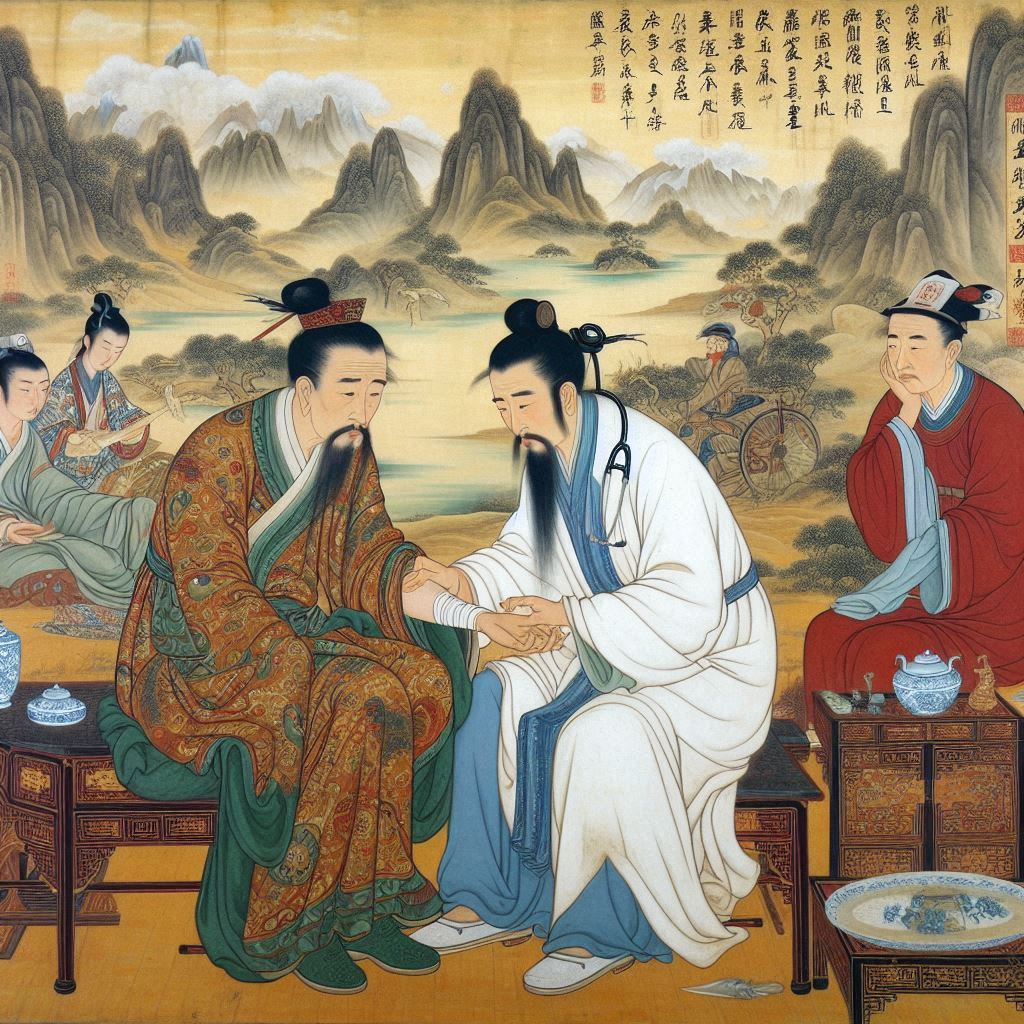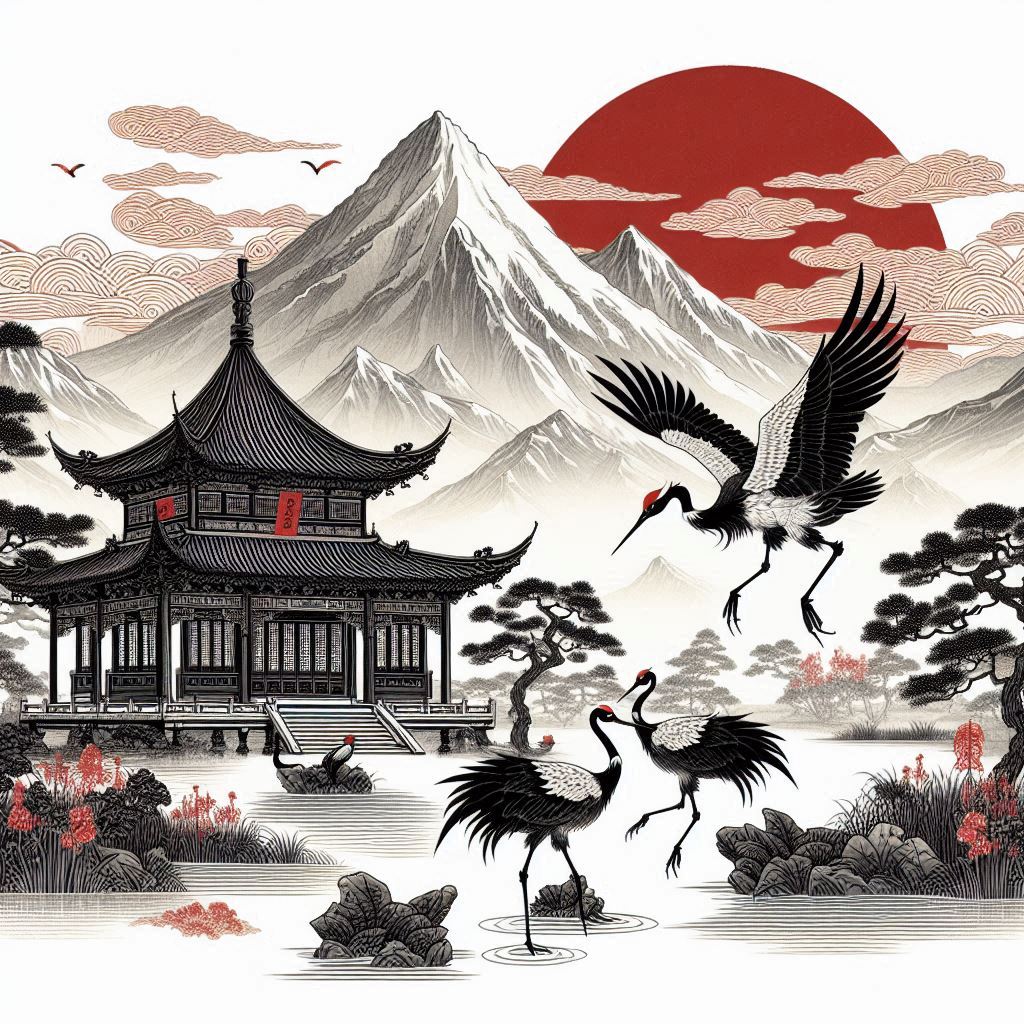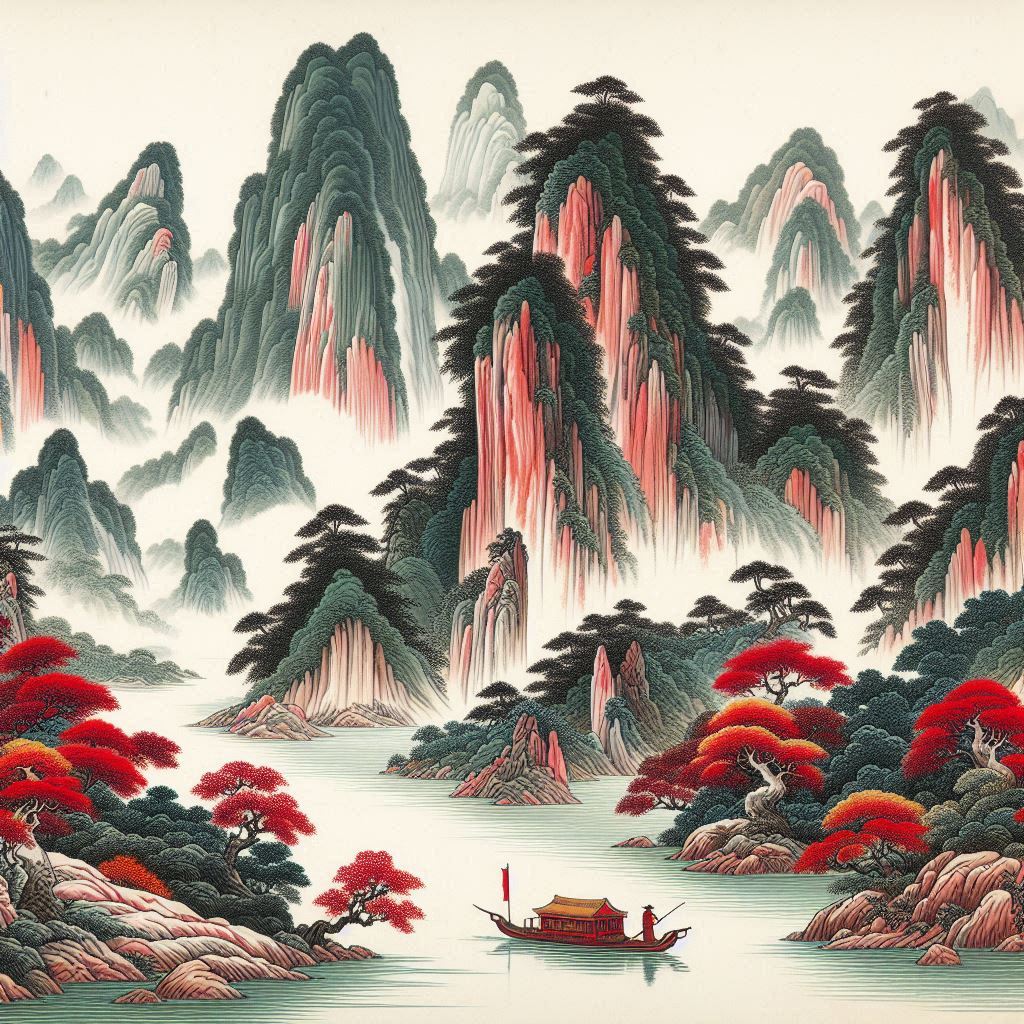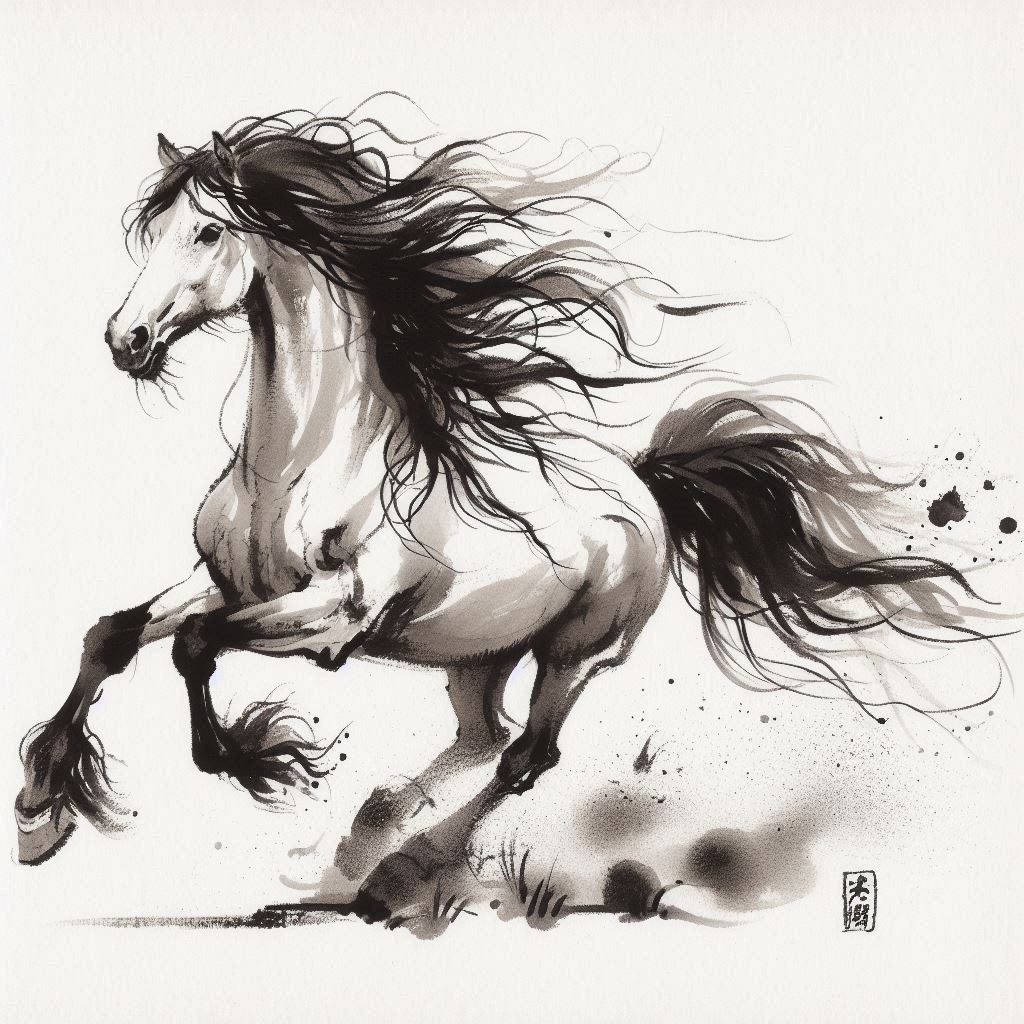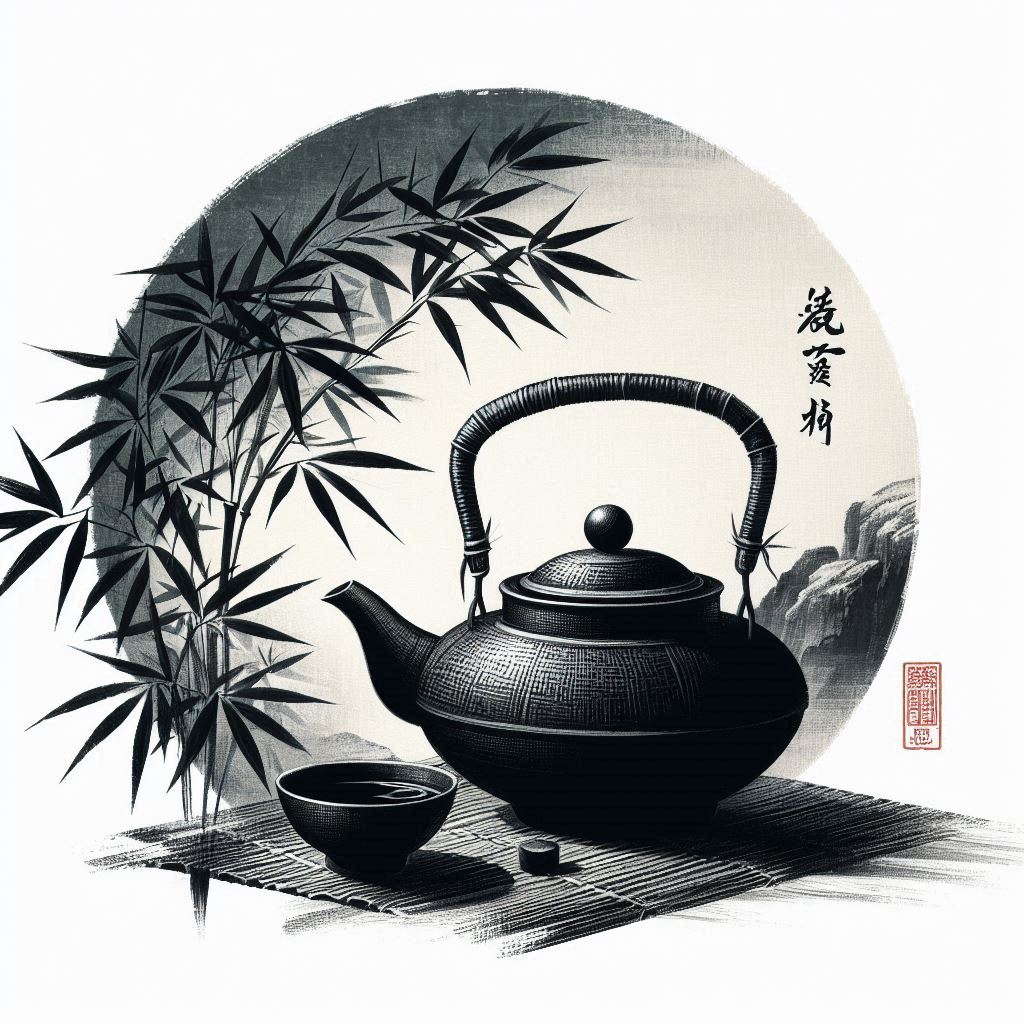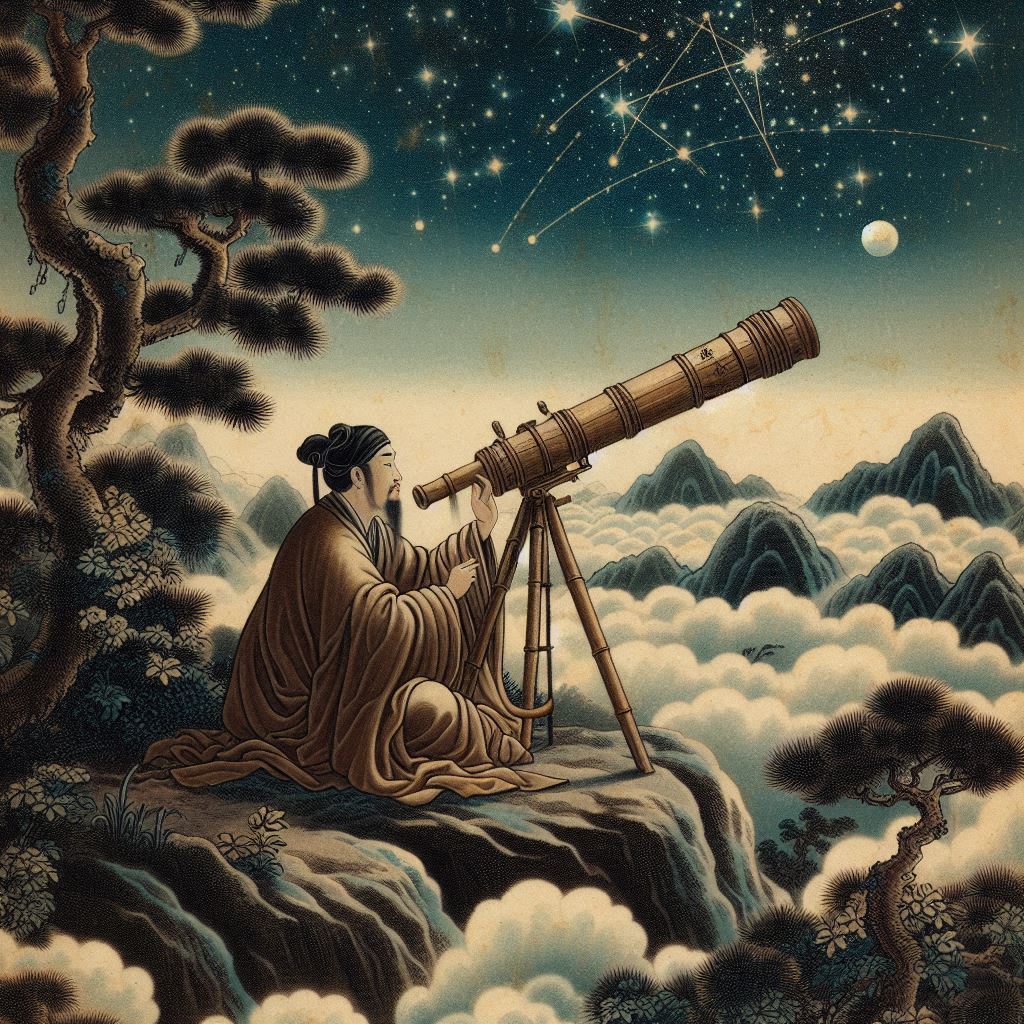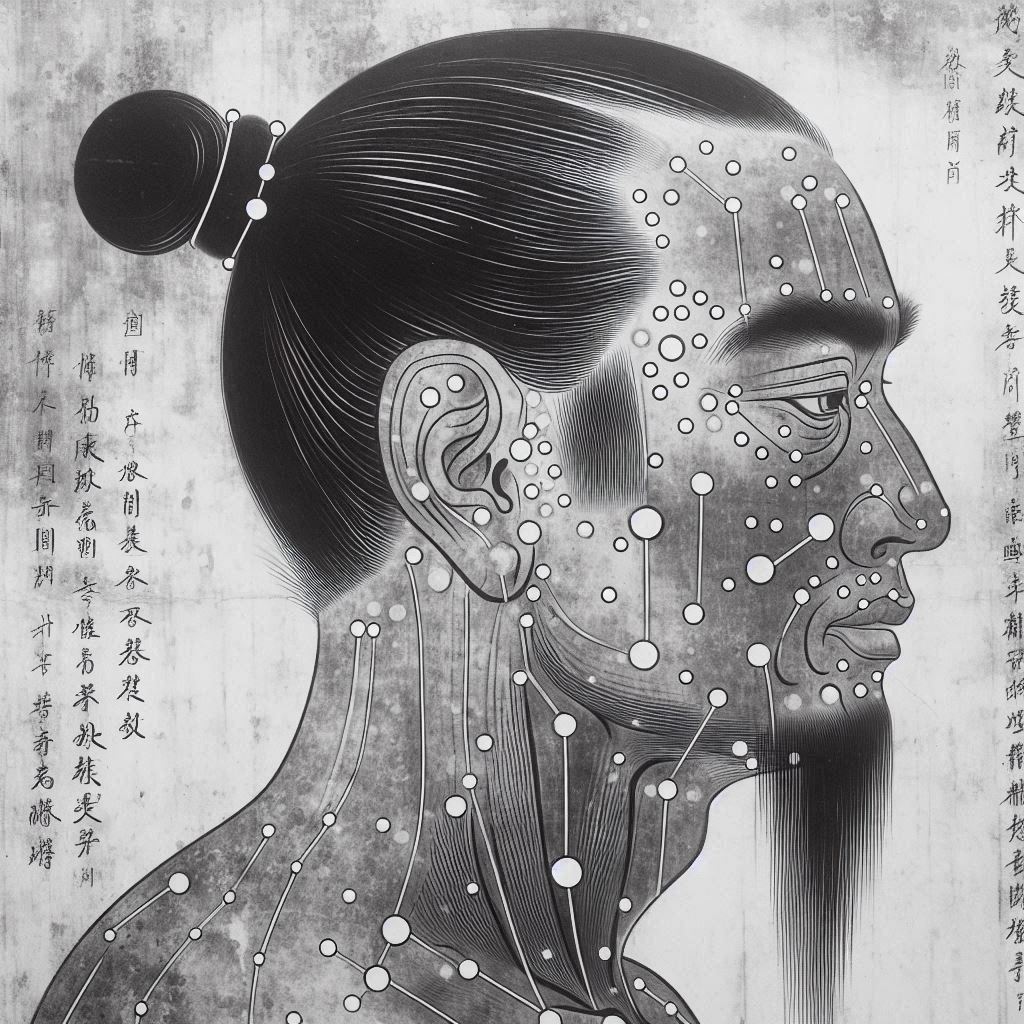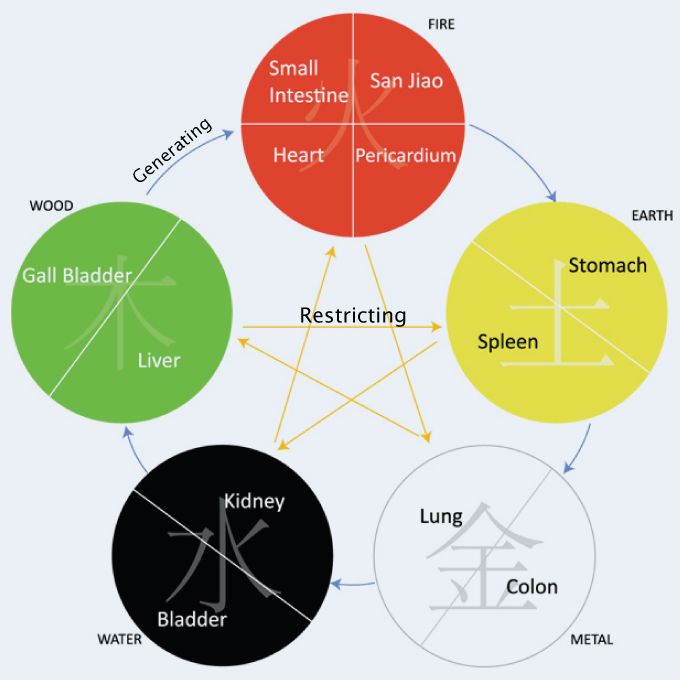
The Five Elements are Wood, Fire, Earth, Metal and Water. Besides being nature's substances the elements also own qualities - the wood ascends, the water moistens, the fire flares, the metal cuts, the earth contains growth. Within these qualities the elements form different types of relationships with one another. For example fire needs wood to burn, ash from the fire creates earth, the earth contains metal, etc. In this type of relationship every element generates, and is generated by an element. Thus this relationship is called a “generating relationship”. In another type of relationship, each element is controlled by and controls another element – metal cuts wood, water extinguishes fire, fire melts metal, etc. Thus this type of relationship is called a “controlling/restricting relationship”
All internal organs work together in Yin and Yang partnerships. The solid organs, i.e. the Liver, the Heart, the Spleen, the Lung and the Kidney (some also count the pancreas) produce, transform, regulate and contain Qi and blood. They have solid structure and rather passive function therefore belong to Yin, as Yin represents matter, structure and slowness. The hollow organs, i.e. the Gall Bladder, the Small Intestine, the Large Intestine, the Urinary Bladder, the Stomach and the Triple Burner are responsible for the digestion, and the transportation of nutrients and waist. They have a hollow structure and an active function therefore belong to Yang, as Yang represents function and warming principle in traditional Chinese medicine.
Each of the Yin - Yang organ partnership corresponds to a certain element. The Liver and its partner organ the Gall Bladder correspond to the element Wood; the Heart and its partner organ the Small Intestine correspond to the element Fire; the Spleen and its partner organ the Stomach correspond to the element Earth; the Lung and its partner organ the Large Intestine correspond to Metal; the Kidney and its partner organ the Urinary Bladder correspond to Water.
In Western medicine it is common to assign a pathology to an organ with the most typical symptom manifestation for that pathology, but in fact, the origin of the underlying condition might be in a completely different organ. This could be grasped through the generating and restricting relationships between the organs as viewed in the Five Elements/Five Phases theory. For example chronic cough with phlegm is a typical lung symptom and conventional medicine would therefore treat the lung. In TCM the origin of the condition most likely hides in the Spleen. The Earth element (Spleen/Stomach) may be imbalanced because of bad eating habits, stress, overwork, etc. and may transfer its disharmony to the Metal element (Lung), with which it is in a generating relationship. While there would be some symptoms that may lead to the Spleen the main symptoms will still come from the Lung, which makes finding the root of the disease difficult. Thus the treatment may become merely symptomatic and the cause of the disease may worsen as it has remained unaddressed and untreated.
If applied correctly the Five Elements/Five Phases theory helps locate the root of the disharmony and treat it before organ tissues and structures become damaged.
YS
Deng Liangye, Gan Yijun, He Shuhui, Ji Xiaoping, Li Yang, Wang Rufen, Wang Wenjing, Wang Xuetai, Xu Hengze, Xue Xuiling, Yuan Jiuling (1987). Chinese Acupuncture and Moxibustion. China: Foreign Languages Press
Zhang, Enqin (1990). Basic Theory of Traditional Chinese Medicine. Shanghai: Publishing House of Shanghai College of Traditional Chinese Medicine
Related Articles:
Yin and Yang in Chinese Medicine
The Spleen in Chinese Medicine
The Kidney in Chinese Medicine

